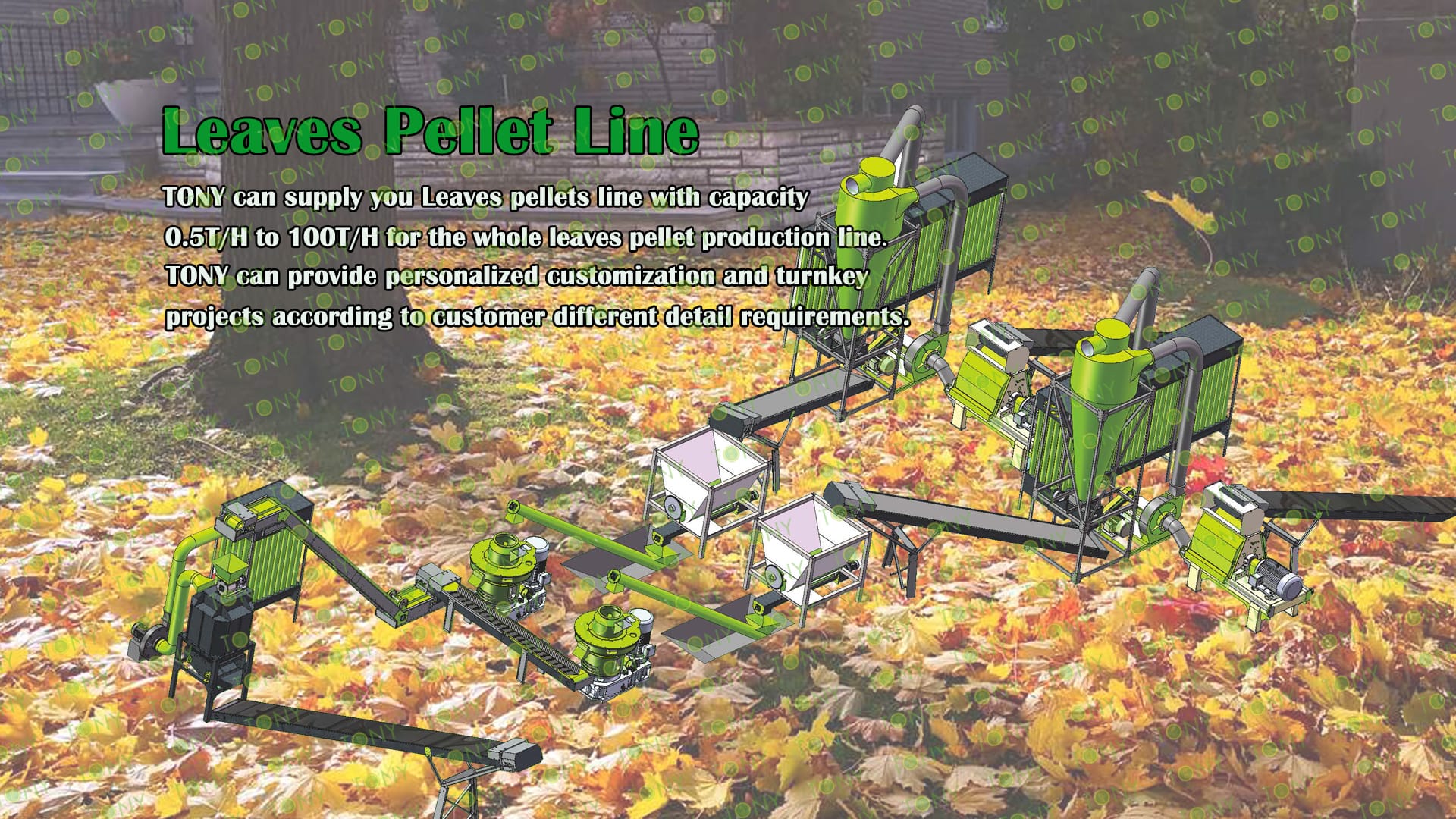
TONY Design 8-10Ton/Hour Leaves Production Line Specification
Leaves and branches can be compressed into pellets, making it easier to store, transport and use the waste. These particles can be used in biomass energy, animal feed, soil amendments and more.
1.Why compress leaves and branches?
Leaves and branches are a large amount of waste generated in gardens and agriculture, and dealing with these wastes is an important environmental problem. The traditional method of disposing of this waste is to pile it together and then incinerate it, landfill it or bury it directly. This kind of treatment not only causes the waste of resources, but also causes serious pollution to the environment.
To better dispose of this waste, a new method is to compress leaves and branches into particles. This makes it easy to store, transport and use the waste. The leaves and branches compressed into pellets can be used for biomass energy, animal feed, soil amendments, and so on, which can be said to be of great value.
2.How to compress leaves and branches into pellets?
There are many ways to compress leaves and branches into particles, the most common of which is mechanical compression. The steps of this method are as follows:
1). Collect leaves and branches.
2). Process leaves and branches into small pieces using a splitter.
3). The processed leaves and branches are compressed by a pellet machine.
4). The compressed particles are screened, dried and packaged.
By mechanical compression, leaves and branches can be compressed into particles of various sizes, such as small particles, large particles, medium particles, and so on. These particles can be customized according to different application scenarios, which is very flexible and practical.
3.Benefits and application scenarios of leaves and branches compressed into pellets.
By compressing leaves and branches into pellets, many benefits can be achieved, such as:
1). Save space. The compressed leaves and branches take up less space and are easy to store and transport.
2). Increase efficiency. Granulated leaves and branches are easier to use and can play a very high benefit in biomass energy, feed and so on.
3). Protect the environment. Leaves and branches compressed into pellets no longer need to be burned, landfilled or buried, thus reducing the environmental burden.
4). Generate economic value. The compression of leaves and branches into particles can be used as animal feed, soil amendments, etc., and has great economic value.
To sum up, compressing leaves and branches into pellets is a very useful treatment method, which is not only economical and practical, but also makes a great contribution to environmental protection.
Countries Suitable For Setting Up Complete Leaves Pellet Plant Include
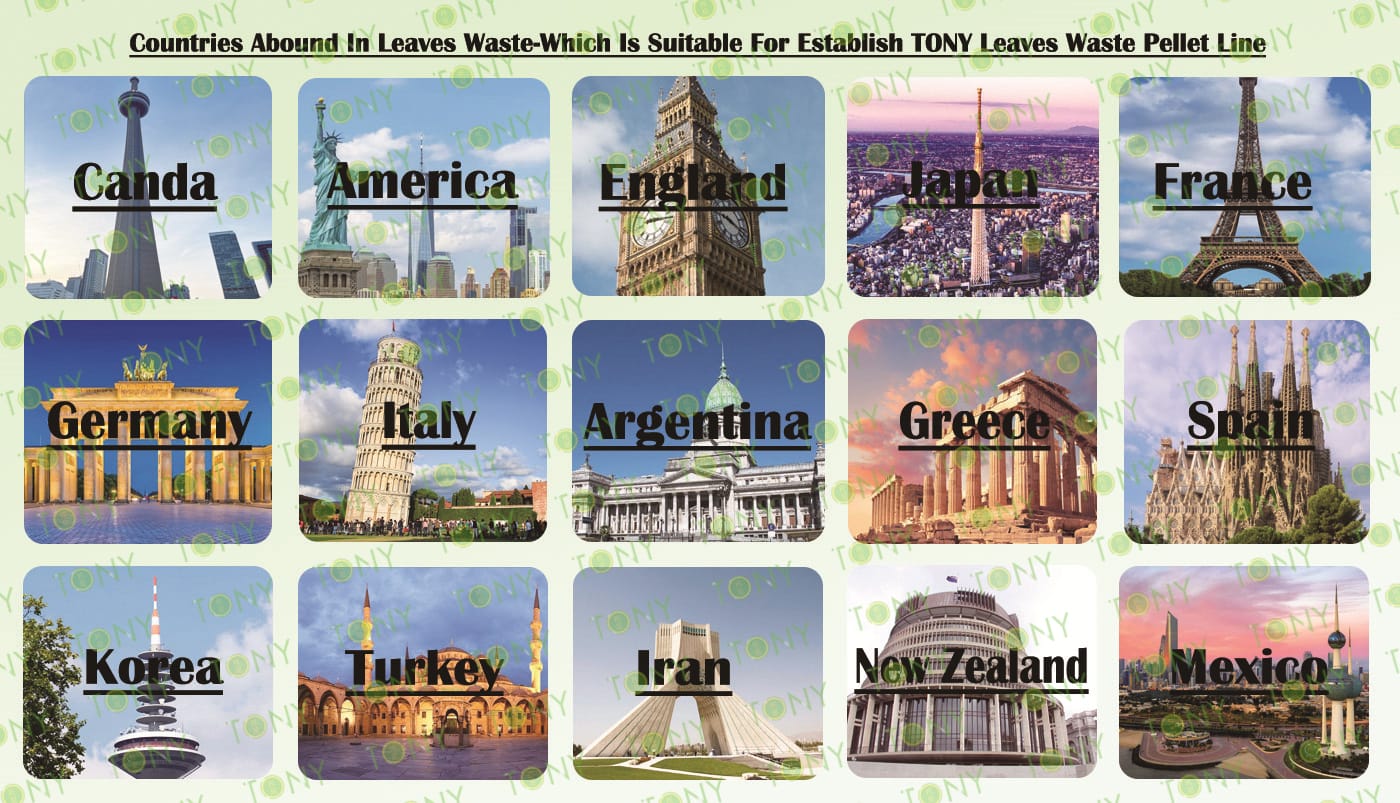
Leaves Waste & Leaves Pellets
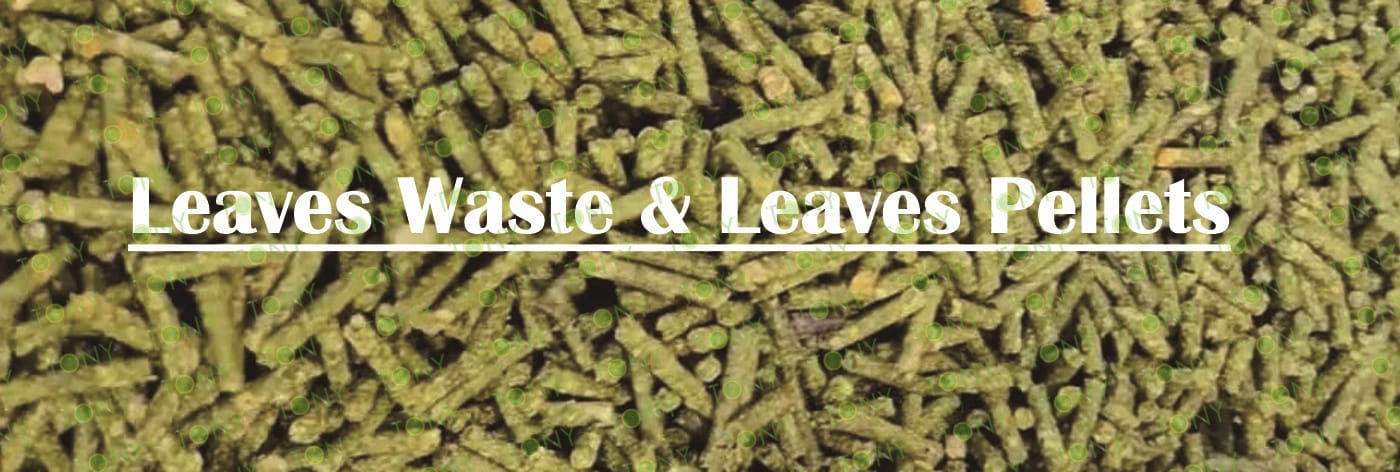

Main Uses Of Leaf Pellets
Make Organic Fertilizer : Crushed leaves can be used as raw materials for organic fertilizer, these fine particles are better in contact with the soil, release nutrients, provide plants need nutrients.
Improved Soil Structure And Water Retention : Leaf particles create tiny pores in the soil, improving soil aeration and water retention, and aiding plant growth.
Farmland Utilization : In rural areas, branches and leaves can be directly returned to the field after being crushed to increase soil organic matter and improve soil environment.
As Fuel : The crushed particles of branches and leaves can be sent to power plants and other places where there is a large demand for fuel. As fuel for power plants, heat is converted into electric energy.
Deep Processing : the crushed particles of the branches and leaves can be deeply processed into sawdust, wood powder, etc., which can be used for making organic fertilizer, particles, papermaking, charcoal, board and so on.
Other Uses Of Leaf Pellets
Mulching Material : crushed leaves can be used as mulching material to reduce soil water evaporation and weed growth, and maintain the environment for plants to grow.
Promote Recycling : Through deep processing, branches and leaves can be used in many fields to promote the recycling of resources.
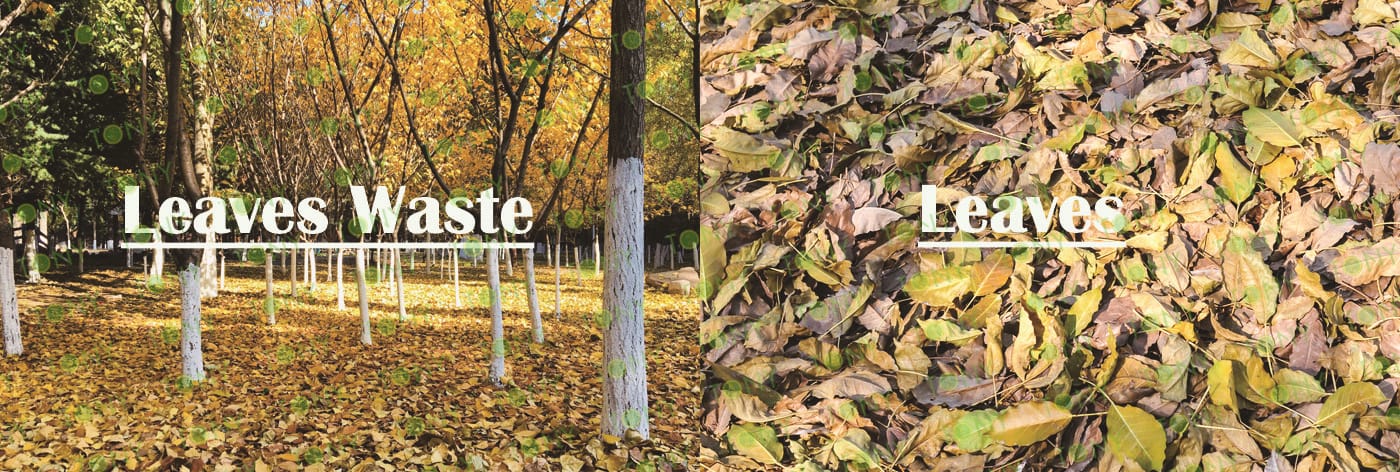
Leaves Pellets Can Be Used For Both Biomasss Fuel And Animal Feed
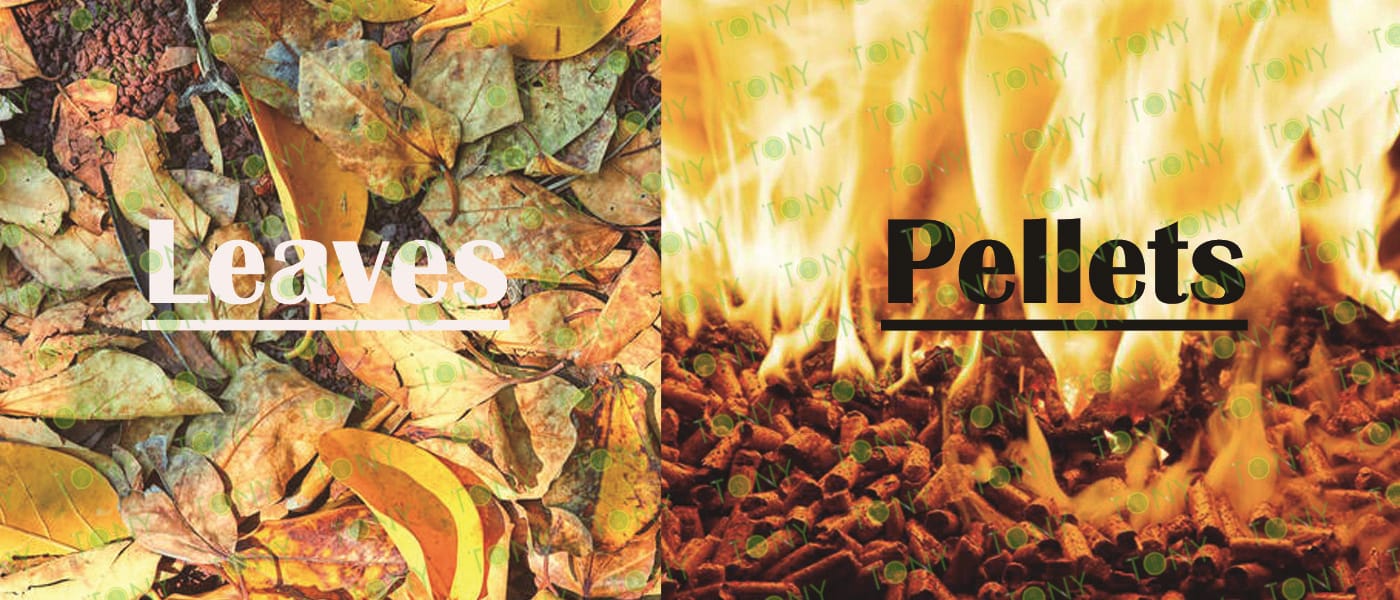

The processing of dead leaves into pellets can be used as biomass energy and animal feed, while also having environmental protection and resource utilization advantages.
1.Use Of Biomass Energy For Processing Dead Leaves Into Pellets
The dead leaves can be processed into pellets that can be used as biomass energy, and this granular biomass is called biomass pellets. Biomass pellets are a kind of green energy to replace traditional fossil fuels. It is more environmentally friendly than traditional coal, oil and other fossil fuels, does not emit a lot of harmful gases, but also has the advantage of renewable. After the dead leaves are processed into particles, they can be burned to generate electricity and can also be used for heating, which effectively reduces the consumption of fossil fuels and has positive significance for environmental protection.
2.Dead Leaves Processed Into Pellets For Animal Feed
Dead leaves can also be used as animal feed after being processed into pellets. The processed dead leaf particles are rich in cellulose, protein and other nutrients, which are of great help to the growth and development of animals. At the same time, the processing of dead leaves into pellets can improve the convenience of storage, transportation and use, which is conducive to the efficiency of animal feed production and use.
3.Advantages Of Environmental Protection And Resource Utilization Of Dead Leaves Processed Into Pellets
Processing dead leaves into pellets also has environmental protection and resource utilization advantages. Dead leaves are a natural resource and in many cases are usually disposed of as garbage, which results in a waste of resources. After the dead leaves are processed into particles, not only can this resource be effectively used, but also can reduce the pollution to the environment. At the same time, in the process of processing particles, there will also be some by-products, which can be further processed and utilized to form a recycling process, which has great environmental protection significance.
4.Conclusion
Processing dead leaves into pellets can be used as biomass energy and animal feed, while also having environmental and resource utilization advantages. Processing dead leaves into pellets is promising and can help save resources and protect the environment.

The leaves are heavily processed to make pellets that can be used as fuel or feed. Specifically, leaf particles can be processed by pellet machine to make density particles, these particles can be used as bioenergy, widely used in industry, agriculture, animal husbandry and other fields . In addition, leaf pellets can be used in energy applications such as power generation and heating .

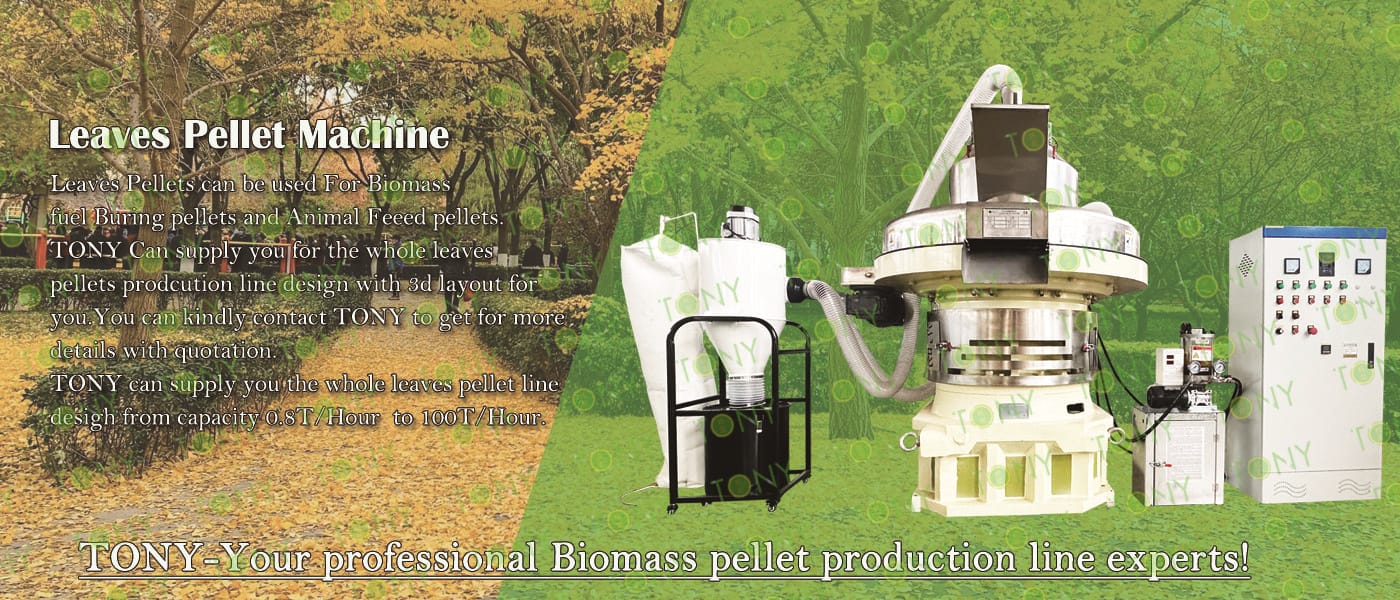
The processing of leaf particles mainly includes the following steps:
Collecting Dead Leaves : Collect lots of dead branches and leaves.
Crushing : The collected leaves are crushed for better subsequent processing.
Pelletizing : A granulator is used to squeeze the crushed leaves into dense particles.drying : The finished particles are dried to ensure their stability and combustion efficiency.
Application Field
The application of leaf particles is very extensive, mainly including the following aspects:
Fuel : Leaf particles can be used as biomass fuel to replace traditional fuels such as coal, with the characteristics of clean and environmental protection .
Feed : Leaf pellets can also be used as feed, especially in animal husbandry, as a food supplement for animals .
Energy Applications : Leaf pellets can be used to generate electricity and heat and are a sustainable source of energy .
Environmental Benefit
The use of leaf pellets as fuel has significant environmental benefits. Compared with traditional coal, biomass pellet combustion produces lower carbon dioxide emissions, helping to reduce environmental pollution. In addition, the production process of biomass pellets is also relatively environmentally friendly, reducing the problem of waste disposal.

TONY Brand 8-10Ton/Hour leaves waste/leaves pellet manufacturing plant can process bagasse with straw and leaves waste materials with nails as raw materials, and solidifies them into high-density pellet fuels through pre-treatment and processing , is an ideal fuel to replace coal and oil, which can save energy and reduce emissions.Now it is widely used by those customers who has various leaves waste raw materials.
1.Capacity: 8-10Ton/Hour
2.Raw materials: Leaves Waste/Leaves.
3.Moisture:Wet type ,about 10-15%.
4.Application: Leaves Waste/Leaves. With Dried Type.
5.Finished Pellets Markets:Large power plants (domestic customers, as well as Japan and South Korea, mainly South Korea more), domestic heating, industrial heating, combustion heat, heating heating, boiler room, school canteen, foundry heat source.

1.Project Name:Leaves Waste/Leaves Pellet Line
2.Raw Materisl: Leaves Waste/Leaves
3.Moisture Of Raw Material: Dried Type 10-15%
4.Capacity:8-10Ton/Hour
5.Process:Crushing Process→Storage Process→Pelleting Process→Cooling Process
6.Main Machine: TONY Hammer Mill, TONY Storage Bin,TONY Pellet Machine TYJ860-III-250KW ,Pellets Cooler And Belt Conveyors
7.Total Power: About 1080KW
8.Need Area: About 600-700㎡
9.Project Country: Russia
10.Voltage:380V,50HZ


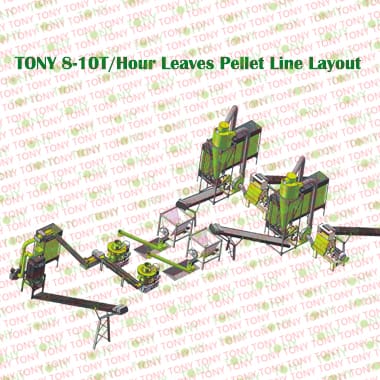 |
Project Layout For Customer |
|
Project Brief Introduction: 1.Product:Leaves Waste/Leaves Pellet Line 2.Capacity:8-10T/Hour 3.TONY Brand 8-10Ton/Hour Leaves Waste/Leaves Pellet Line Project Process 4:Main Machine: TONY Hammer Mill, TONY Storage Bin,TONY Pellet Machine TYJ860-III-250KW ,Pellets Cooler And Belt Conveyors 5.Total Power: About 1080KW 6.Need Area: About 600-700㎡ 7.Country:Russia 8.Worker Needed:2-3Persons. 9.Water Needed: No Need For Any Water. |

|
How to use TONY pellet line to proceed from Leaves Waste into pellets? It mainly contains the following steps and machines as following: 1.To Use TONY Hammer Mill To Crush Leaves Waste Into 8-14mm Sawdust. 2.To Use TONY Storage Bin To Storage The Leaves Sawdust. 3.To Use TONY Vertical Ring Die Pellet Machine To Products Pellets With φ6-8mm. 4.To Use TONY Galvanized Cooler To Cool Pellets From 80-90℃ to 20-30℃. You can contact TONY to get more details with machine list and quotation. TONY can design the whole pellet line according to your demand with 3D Layout. |
|
||||||||||||||||||||||||||||||||||||||||



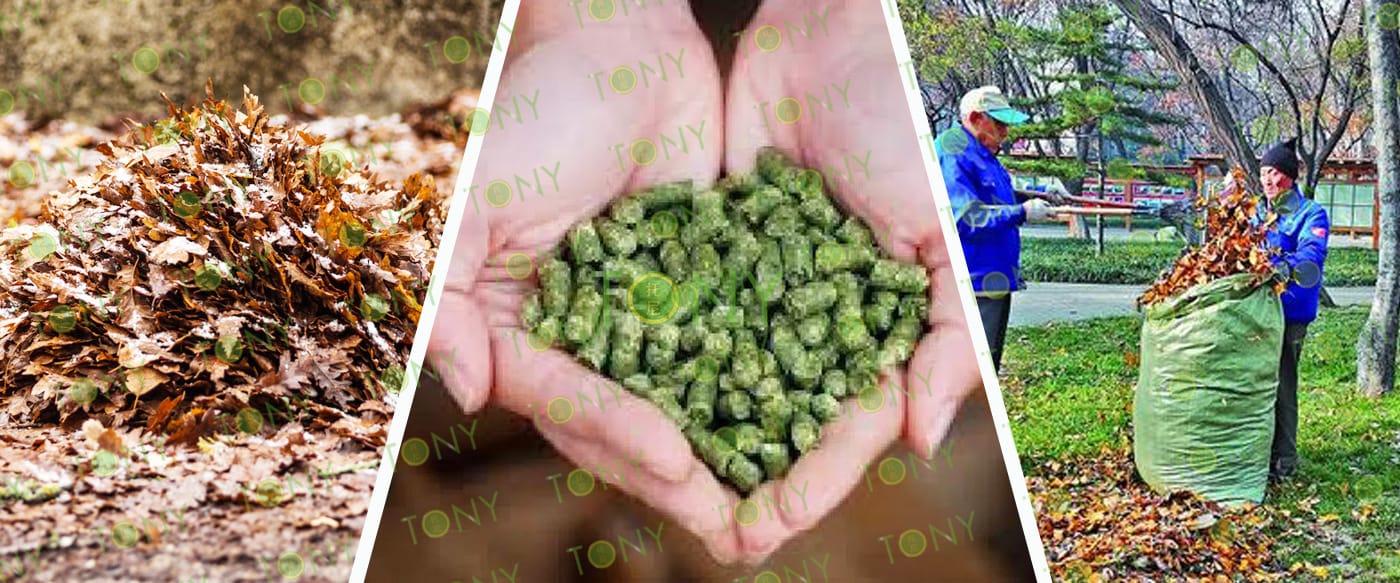

Following TONY Will Introduce For You For All The Necessary Machinery That Will Be Used For The Whole Pellet Production Line. Some machines can be custom made by customer according to different customer's detailed demand.Contact TONY for more details with quotation and layout.
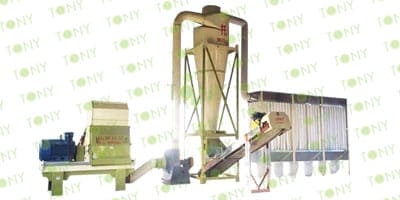 |
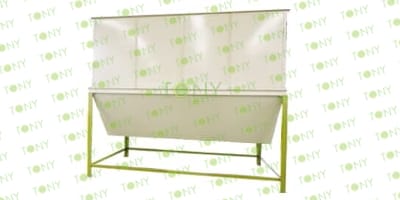 |
 |
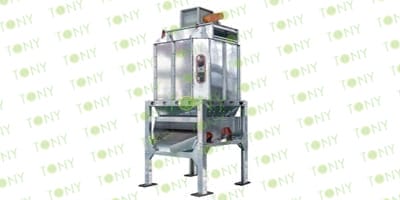 |
| High Effective Hammer Mill | TONY Storage Bin | Vertical Ring Die Sawdust Pellet Machine | Cooler Separator |
|
1.Crush Baggase Into 8-14mm dust. 2.Model: TFD75-132-132KW *2Sets 3.Capacity:4-5Ton/Hour/Set |
1.To Stroage bagasse before pellet machine. 2.Model: TLC-45*2Sets 3.Capacity:4-5Ton/Hour/Set |
1.Model: TYJ860-III-250KW*2Sets 2.Capacity:4-5Ton/Hour/Sets 3.New 304SS Type |
1.To Cool Pellets From 80-90℃ to 20-30℃ 2.Model:TCN-6 3.Capacity:8-10Ton/Hour |

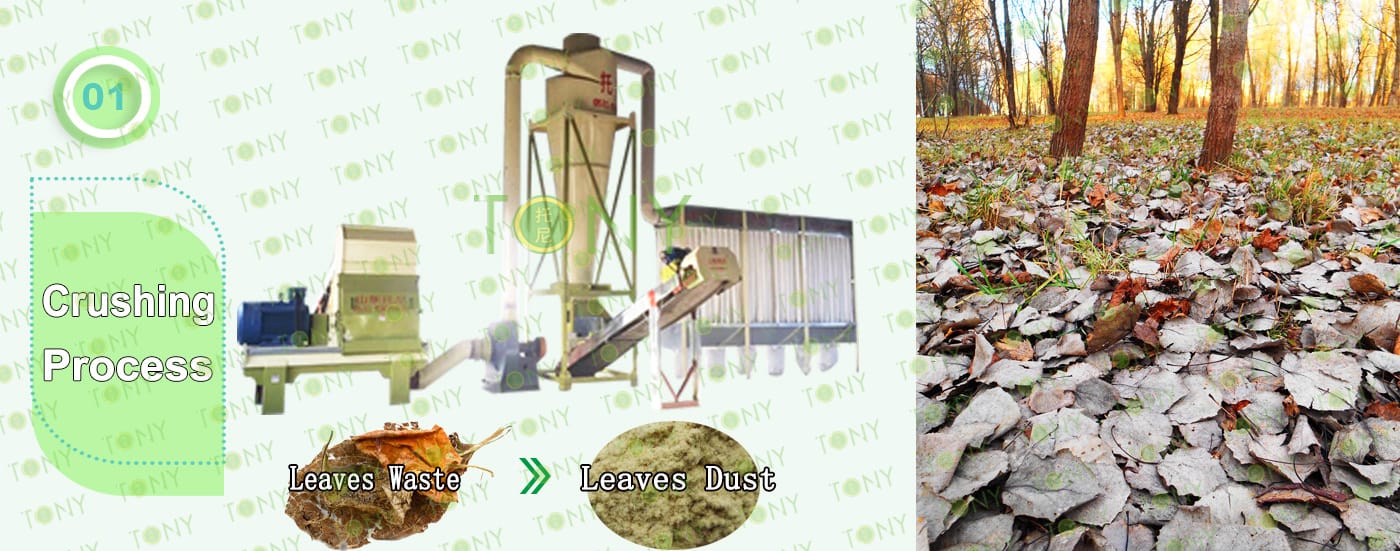
|
1.Leaves Fine Crushing Process: A.This process is mainly TONY Hammer Mill to crush leaves into 8-14mm sawdust. B.Capacity:4-5Ton/Hour. C.TONY use High Effective Hammer Mill TFD75-132KW-2Set for this process. Main Parts: 1).TONY High Effective Hammer Mill. 2). 90 Holes Galvanized Dust Collector. 3). Sawdust Transportation Fan Blower. 4). Cyclone With Airlock. 5).Electrical Cabinets. |

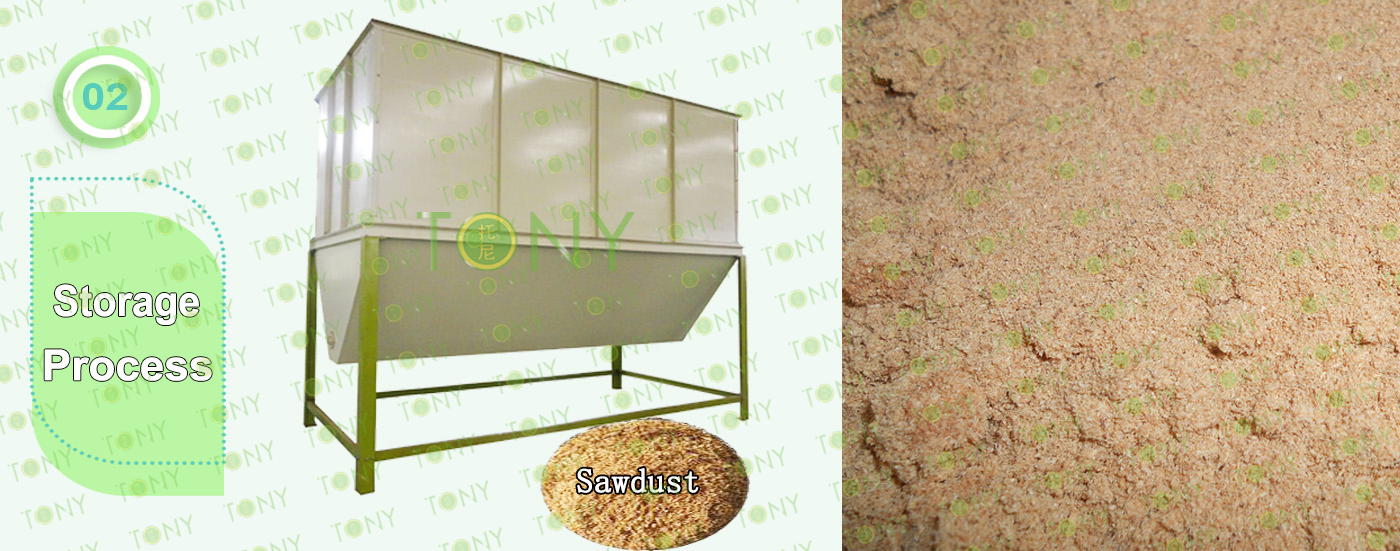
2.Stroage Process:
A.This process is mainly used to storage the sawdust with φ8-14mm.
B.Capacity:8-10Ton/Hour.
C.The customer chooses 2 sets of TONY Brand Storage Bin.
Main Parts:
1).TONY's new Storage Bin.
2). Double Screw Inside.
3). Electrical Cabinets.

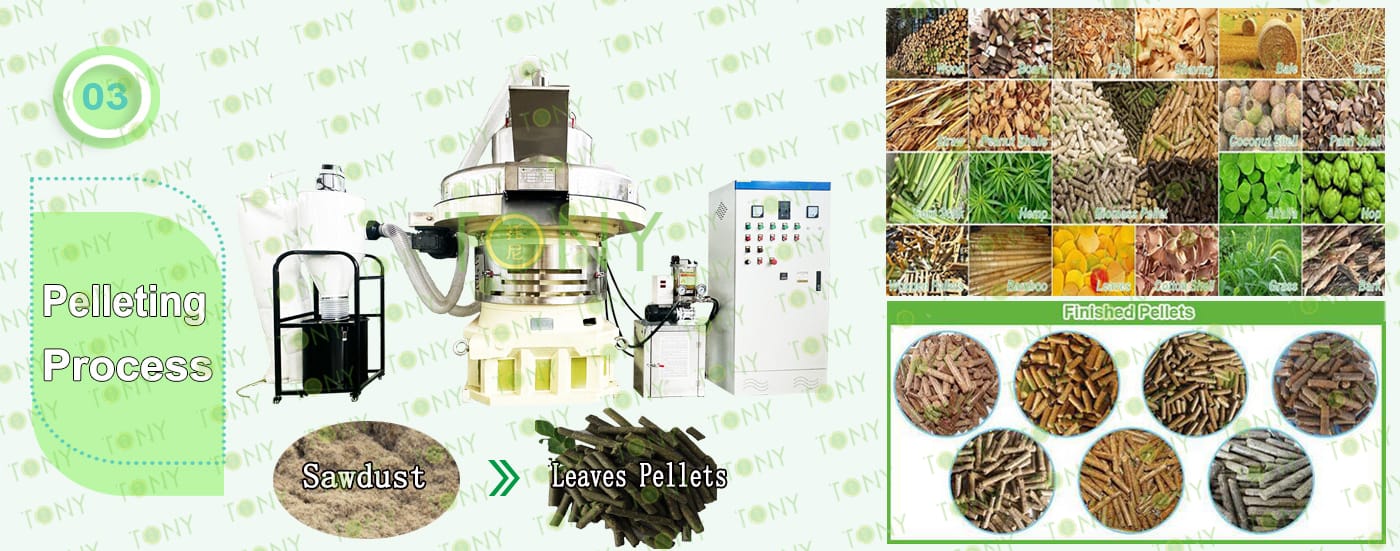
|
3.Pelleting Process: A.This process is mainly used to product pellets with φ6-8mm. B.Capacity:4-5Ton/Hour. C.The customer chooses 2 Sets of TONY Brand Vertical Ring Die Pellet Machine TYJ860-III-250KW with capacity 4-5Ton/Hour. Main Parts: 1).TONY's new Vertical Ring Die Pellet Machine. 2). Cyclone And Bags Dust Collectors. 3).Bearings Automatic Lubrication System. 4). Electrical Cabinets. You can choose TONY new type SS304 pellet machine or old type MS pellet machine. |

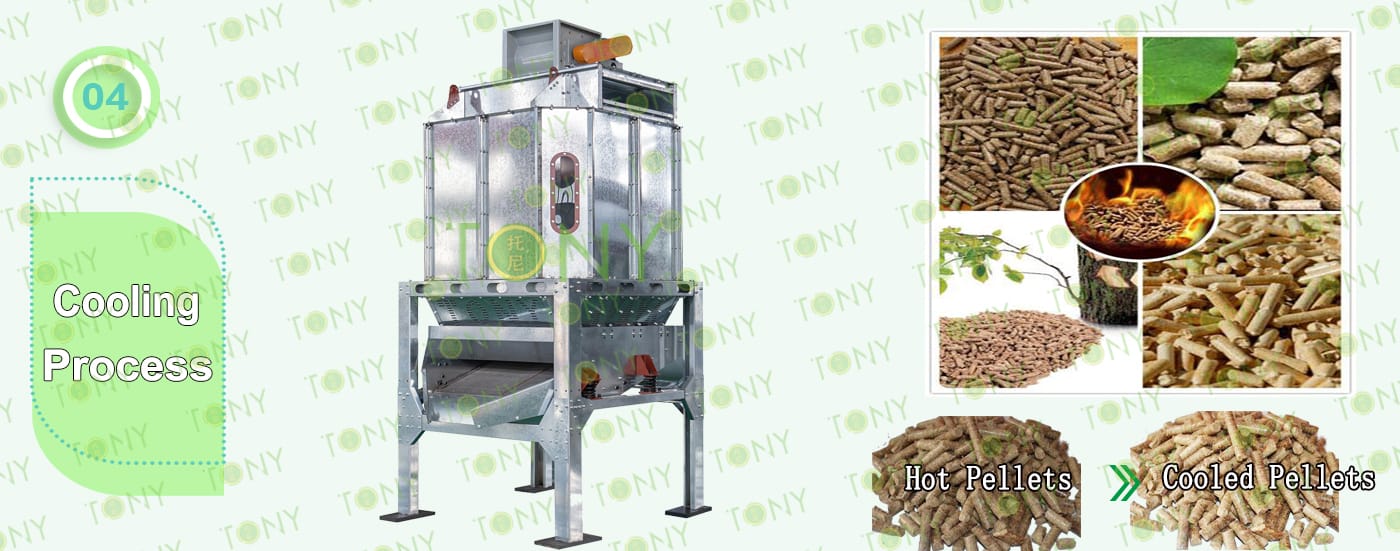
4.Cooling Process:
A.This process is mainly used to cool pellets from 80-90℃ to 20-30℃
B.The customer chooses 1 Set Of TONY Galvanized Cooler Separator with capacity 8-10Ton/Hour.
Main Parts:
1).TONY's new Galvanized Cooler Separator With Vibrating Screen.
2). Cyclone And Bags Dust Collectors.
3). Fan Blower.
4). Connect Pipes.

TONY Detailed Design 3D Layout With Detailed Size For 8-10Ton/Hour Leaves Waste Pellet Line According To Cusomer Factor Size
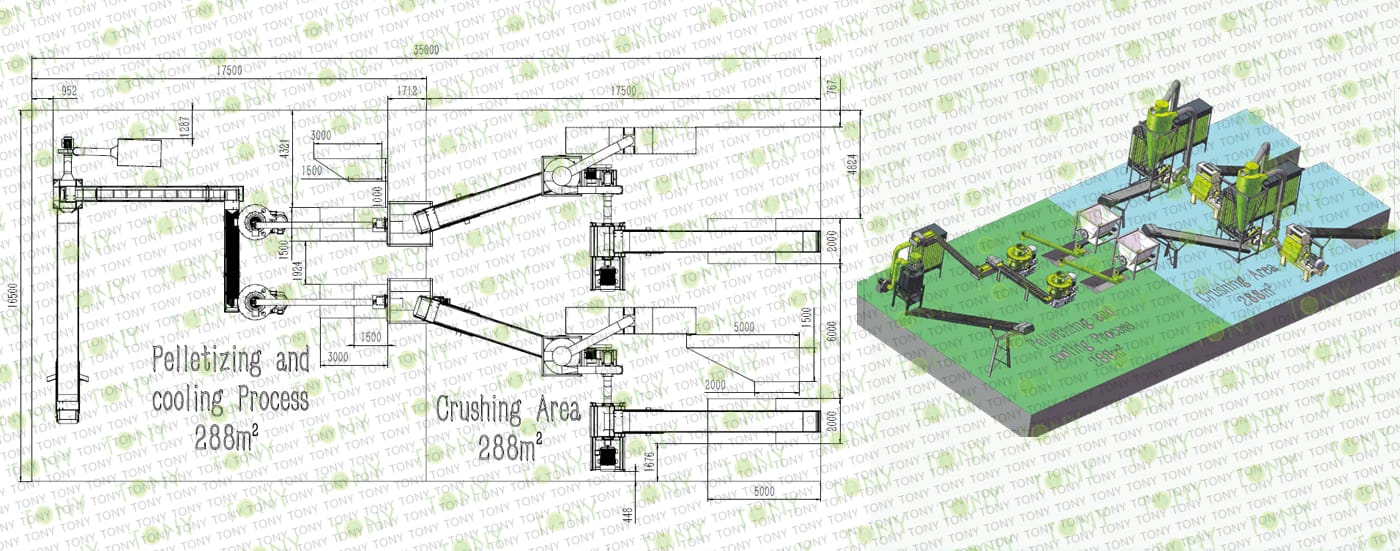

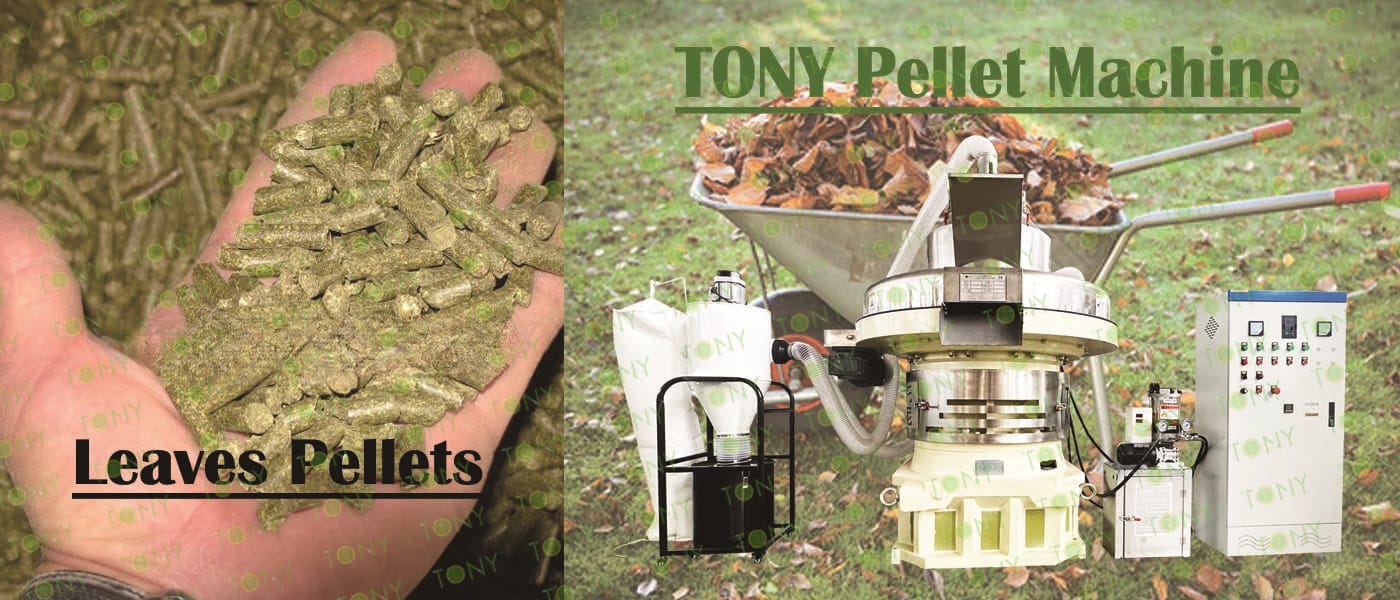
The economic benefits of leaf compaction are mainly reflected in the following aspects :
Cost-Effectiveness : Using agricultural and forestry waste such as leaves as feedstock can significantly reduce feed and fuel costs. For example, mixing leaves with corn stalks and wheat bran to make feed pellets for raising cattle and sheep can greatly reduce breeding costs . In addition, raw materials such as leaves are often cheaper or even freely available, further reducing production costs .
Environmental Benefit : Leaves and other agricultural and forestry wastes are processed into granular fuel, which can not only replace traditional fossil energy, such as coal, oil and natural gas, but also is a low-carbon and environmentally friendly clean fuel. The new fuel is directly burned in the biomass burner, which helps to reduce environmental pollution and meets the requirements of sustainable development .
Market Prospect : Biomass pellet fuel market has broad prospects. With the improvement of environmental awareness and the promotion of renewable energy policies, the demand for biomass pellet fuel is gradually increasing. For example, the wood pellet machine production line shows a full set of process flow from crushing, crushing, drying to granulation, indicating that the industry is developing rapidly .
Technical Feasibility : The production technology of biomass particles has been relatively mature, including grinding, drying, mixing, extrusion and other technological processes. These technologies enable the efficient conversion of biomass waste into high quality fuel pellets .
To sum up, leaf pressing granule not only has significant cost effectiveness and environmental benefits, but also has broad market prospects and high technical feasibility, which is a sustainable development mode worth promoting.

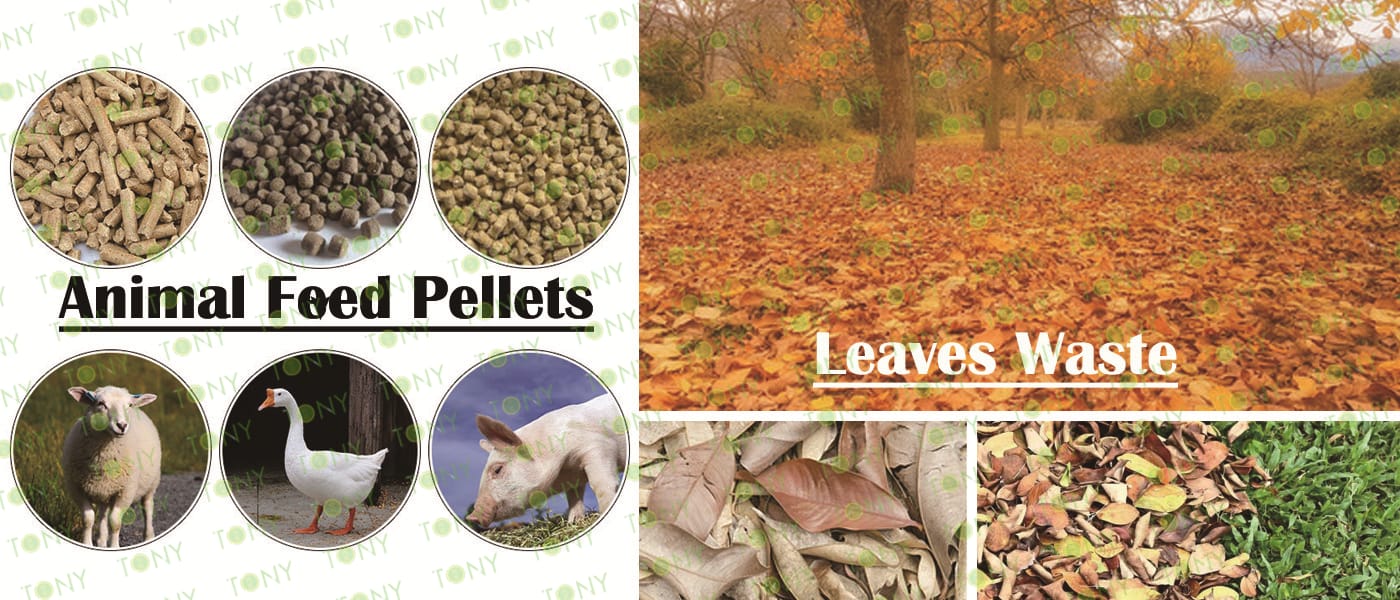
The main uses and sales of leaf press particles include the following aspects :
Biomass Fuel : Leaf pressure particles can be used as biomass fuel, with the characteristics of clean environmental protection. They can replace traditional coal and reduce environmental pollution .
Biomass Pellet Fue : Leaf pressure pellets can be processed into biomass pellet fuel, which produces less pollutant emissions during combustion and meets environmental protection requirements. Biomass pellet fuel is widely used in domestic, industrial and agricultural fields as an alternative energy .
Power Plants And Boiler Plants : Leaf pressed particles can be sent to power plants and boiler plants for use as fuel. Due to the small volume, high density and high transportation efficiency of leaf pressure particles, there is a high demand in power plants and boiler plants .
Pellet Plant : Pellet plant can further process leaf pellets into biomass pellet fuel to further utilize these resources. This deep processing method not only improves the utilization rate of resources, but also conforms to the concept of waste utilization and resource conservation .
Other Uses : Leaf pellets can also be used in other fields, such as large farms, as feed or fuel. Due to its easy storage and convenient transportation, it is suitable for large-scale applications .
Through the above ways, leaf pressure particles have been widely used and sold, not only to achieve the effective use of resources, but also to promote environmental protection and sustainable development.


Leaves Waste pellets: A new choice for urban biomass fuel!
In today's world, the growing demand for sustainable energy is forcing us to find innovative ways to reduce our dependence on fossil fuels. One area of concern is biomass energy. Can garden waste be processed into biomass pellets?
The answer, naturally, is yes. Garden waste, including tree branches, leaves, lawn trims, etc., is usually generated in large quantities in urban and rural areas. This waste is usually considered garbage and needs to be disposed of properly. However, these wastes are actually potential biomass resources that can be used to produce biomass pellets. Branches and leaves contain a lot of lignin, which can be used to process biomass particles, and the fuel value of the finished particles can reach more than 3000 kcal. Biomass pellets are small particles made from biomass materials that are commonly used for power generation, heating, and other energy applications.
The processing of biological particles requires several processes such as crushing and pressing into particles.
Waste leaves can indeed be used as raw materials for biomass particles, which can be converted into efficient and environmentally friendly biomass energy through specific process treatment. This method not only solves the problem of agricultural waste disposal, but also brings new development opportunities for the field of new energy.
1.Status And Challenges Of Waste Leaves
Waste leaves are an inevitable by-product of the agricultural process and are produced in huge quantities every year. However, the disposal and utilization of waste leaves has been a difficult problem for a long time. Traditional treatment methods such as landfill, incineration, etc. not only waste resources, but also may cause environmental pollution. Therefore, it is particularly important to find a treatment method that is both environmentally friendly and efficient.
2.Feasibility Of Waste Leaves As Raw Materials For Biomass Pellets
Biomass pellet is a kind of solid fuel made by compression and molding of biomass raw materials. It has the advantages of high calorific value, low pollution, easy storage, etc., and is widely used in industry, agriculture, civil and other fields. As a biomass raw material, waste leaves have the following advantages:
1). Abundant Raw Materials: Waste leaves are produced in large quantities every year, with wide sources and easy collection.
2). Renewable: Waste leaves are the product of plant growth, with renewable, in line with the requirements of sustainable development.
3). Energy Value: Waste leaves contain a certain amount of cellulose, hemicellulose and lignin and other organic substances, which have a certain energy value.
Based on the above advantages, waste leaves are highly feasible as raw materials for biomass pellets. Through specific process treatment, such as crushing, drying, compression, etc., waste leaves can be converted into efficient and environmentally friendly biomass particles.
3.Potential Value Of Waste Leaf Biomass Pellets
The potential value of waste leaf biomass particles is mainly reflected in the following aspects:
1). Alternative To Traditional Energy: Waste leaf biomass particles can be used as fuel to replace traditional coal, oil and other energy sources, reducing the consumption and emissions of fossil energy.
2). Promote Agricultural Circular Economy: The production process of waste leaf biomass particles can promote the resource utilization of agricultural waste and promote the development of agricultural circular economy.
3). Improve Environmental Quality: The combustion process of waste leaf biomass particles produces fewer pollutants, which is conducive to improving environmental quality.
In summary, waste leaves can indeed be used as raw materials for biomass particles and converted into efficient and environmentally friendly biomass energy through specific process treatment. This method not only solves the problem of agricultural waste disposal, but also brings new development opportunities for the field of new energy. With the continuous progress of technology and the increase of market demand, the application prospect of waste leaf biomass particles will be broader.


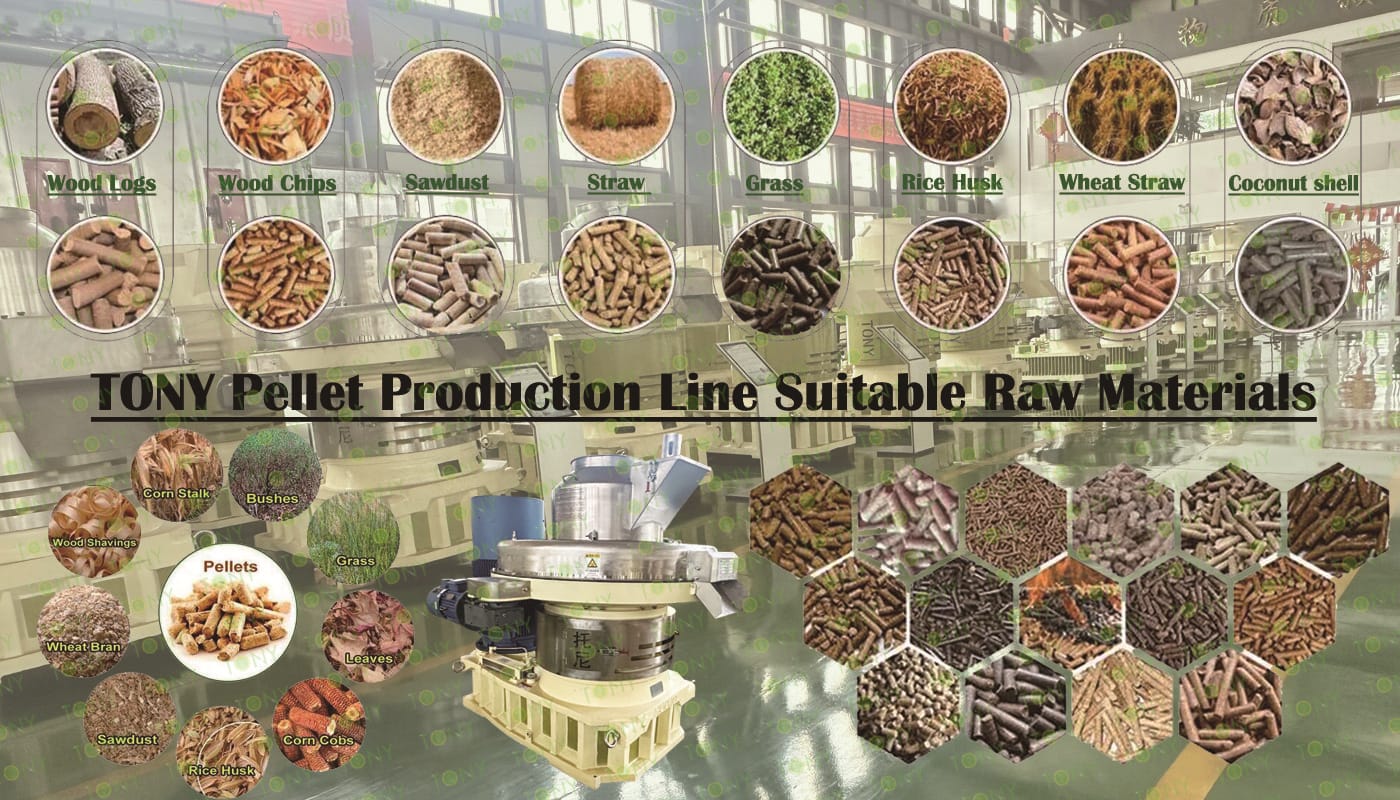

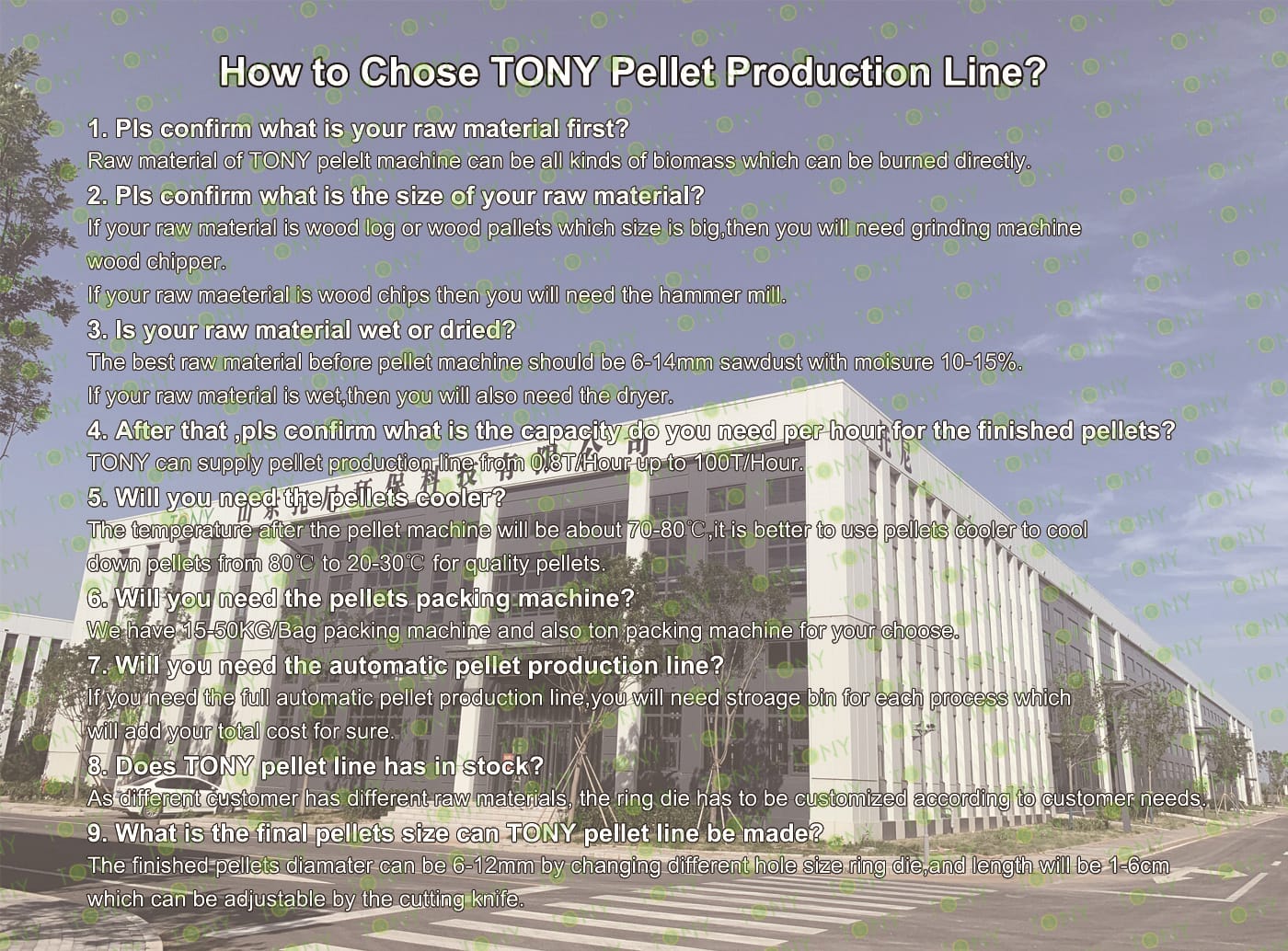
2024 Tony Machinery - All Rights Reserved. Map